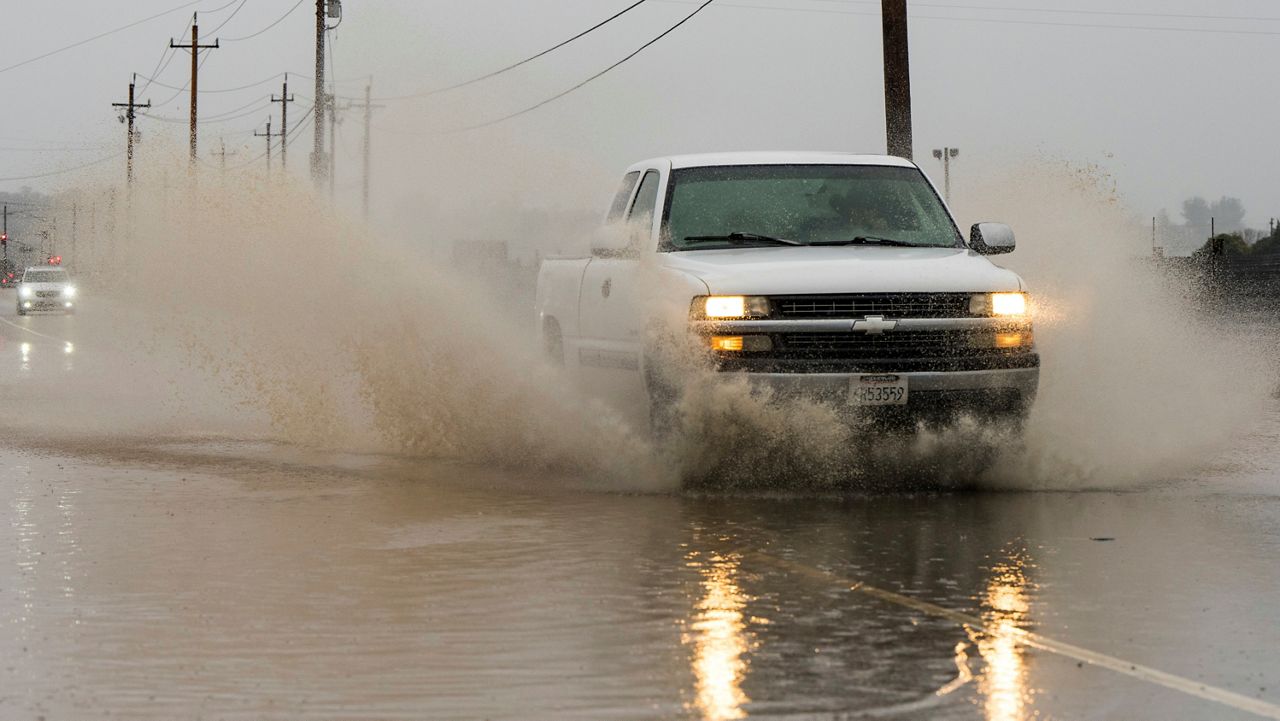SACRAMENTO, Calif. — As a series of winter storms bear down on California, bringing with it the possibility of flooding, mudslides and power outages, state transportation officials are urging drivers to keep off the road.
What You Need To Know
- The National Weather Service has issued a flood watch for LA and Ventura counties in anticipation of rain falling at a rate of one inch per hour.
- Caltrans has already activated its 12 emergency operation centers throughout the state
- Over 4,000 crews have also been deployed and are working 12-hour shifts around the clock “to address any flooding, mudslides, rock slides — anything that may impact the traveling public”
- CHP acting commissioner suggested drivers make sure their vehicles have properly inflated, well-treaded tires and, if they live in a snowy area, to carry chains or have studded tires
“If you can stay home, stay dry and stay safe,” California Department of Transportation Director Tony Tavares said Wednesday during a winter storm response update following Gov. Newsom’s statewide emergency declaration. “We’re asking the public right now that if you don’t need to be on our roadways, avoid those nonessential trips, at least until the peak of the storm subsides.”
The National Weather Service has issued a flood watch for LA and Ventura counties in anticipation of rain falling at a rate of one inch per hour. California Office of Emergency Response Director Nancy Ward said the current winter storm is the second in a series that could continue for the next seven to 10 days and “may be one of the most challenging and impactful series of storms to touch down in California in the last five years.”
Caltrans has already activated its 12 emergency operation centers throughout the state, Tavares said. Over 4,000 crews have also been deployed and are working 12-hour shifts around the clock “to address any flooding, mudslides, rock slides — anything that may impact the traveling public.”
To be able to react and recover quickly, the agency is placing equipment in critical locations and is also monitoring bridges for water levels.
“We will be proactively closing roadways if we feel the conditions are unsafe,” Tavares said.
He urged drivers to download its QuickMap mobile app to receive push notifications about road closures and traffic issues in real time.
California Highway Patrol Acting Commissioner Sean Duryee also urged motorists to stay home if possible. If they absolutely have to drive, he suggested they make sure their vehicles have properly inflated, well-treaded tires and, if they live in a snowy area, to carry chains or have studded tires. He also suggested drivers make sure their windshield wipers are in good condition.
Above all, he urged drivers to slow down and avoid attempts to cross flooded areas.
“Following too close, your ability to safely stop and avoid hazards or collisions is drastically reduced on wet or icy roadways,” Duryee said.
Attempting to drive through as little as 12 inches of water can also cause a vehicle to start to float.
“Add to that a slight current from flood waters, and your vehicle can easily be pushed off the roadway into deeper water, creating a true life-threatening emergency,” he said, adding that “the CHP will have every available resource committed to patrol and the safety of those traveling on California’s roadways.”



